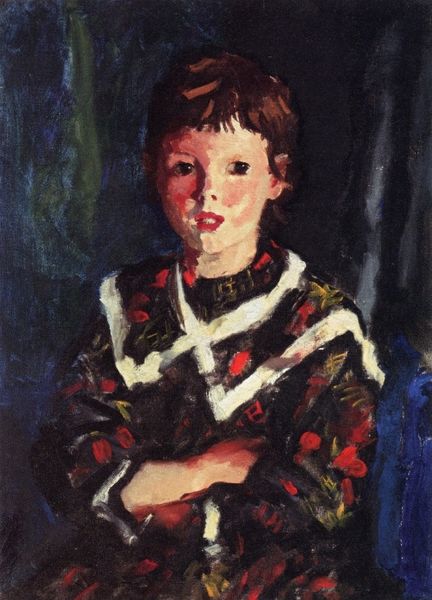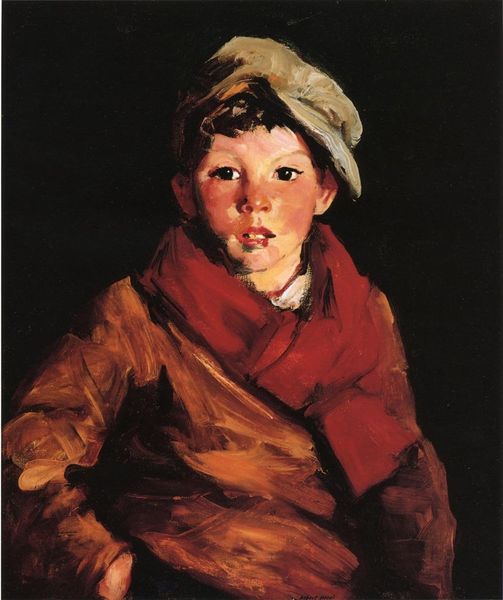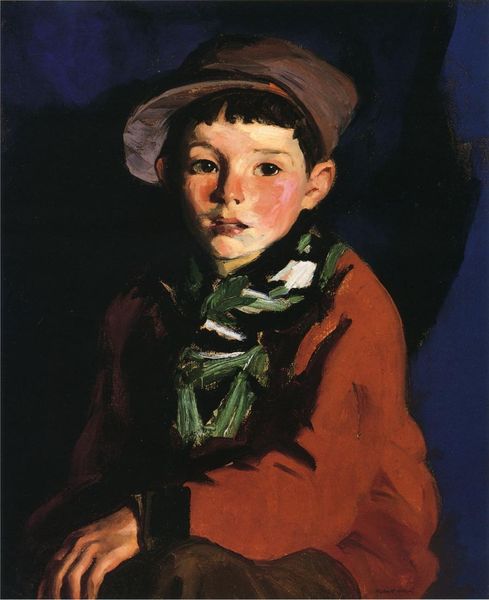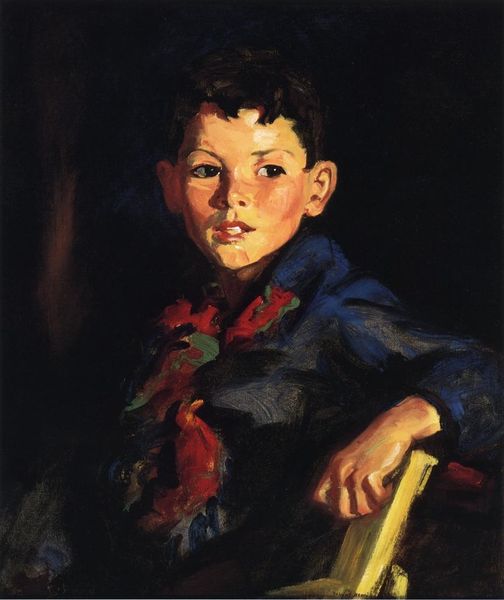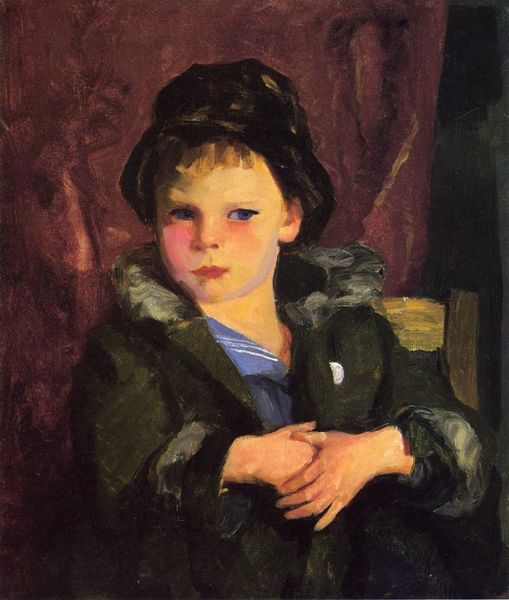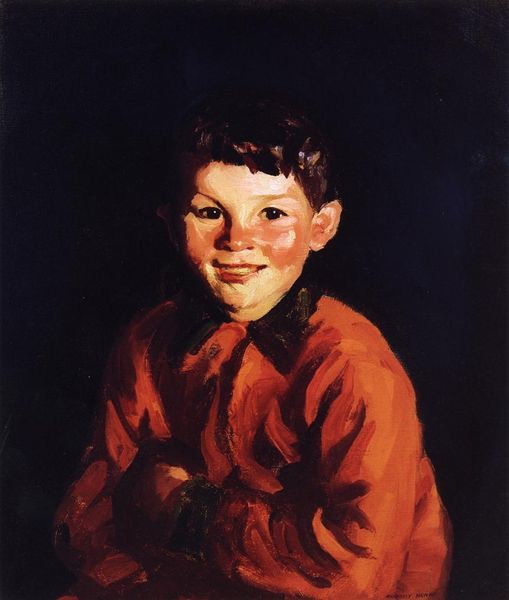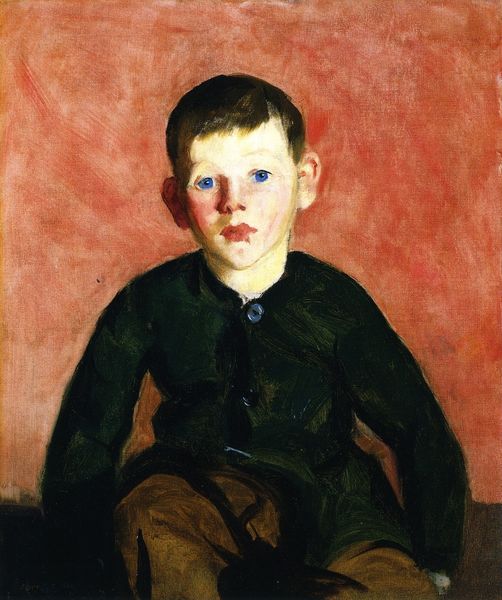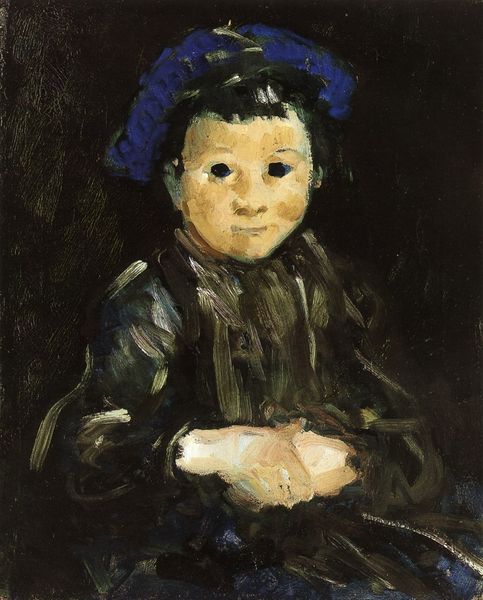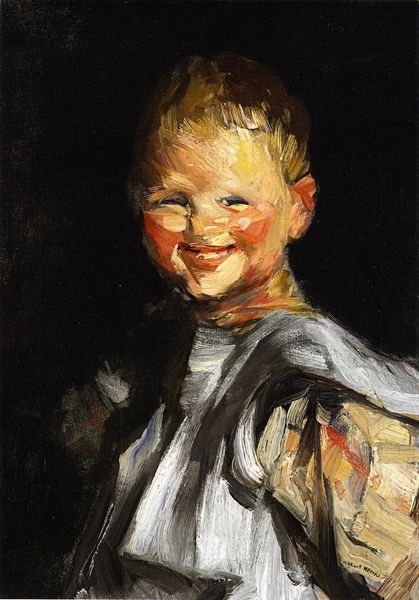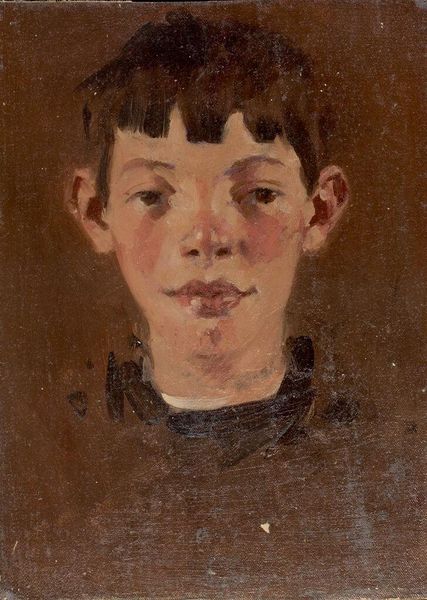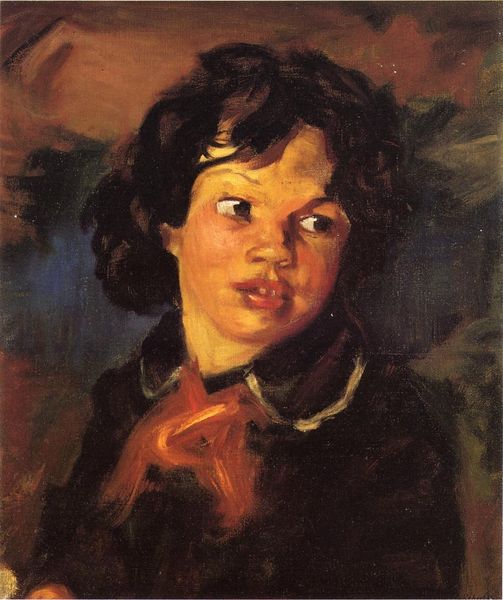
painting, oil-paint
#
portrait
#
painting
#
oil-paint
#
ashcan-school
#
genre-painting
#
realism
Dimensions: 60.96 x 50.8 cm
Copyright: Public domain
Editor: George Luks' "Butts," painted in 1928 with oil on canvas, presents a young boy smoking, which is already a striking image. The thick brushstrokes and somber palette evoke a sense of youthful defiance or world-weariness. What meaning do you think the artist was trying to convey here? Curator: Well, the immediate and unsettling symbolism is childhood innocence juxtaposed with adult vice, isn't it? Luks was a part of the Ashcan School. What did that movement try to capture? Editor: As I understand it, the Ashcan School focused on portraying everyday life, particularly of the working class, so this fits that theme. It's about a kind of raw authenticity. Curator: Precisely. The cigarette becomes a powerful symbol, doesn't it? It reflects both social commentary and personal expression. The boy’s gaze also demands our attention, maybe even our complicity. Does he look like he is enjoying the experience? Editor: No, not at all. He actually seems quite vulnerable despite the cigarette. The painting almost feels like a statement against glamorizing harmful habits, a visual cautionary tale. Curator: I agree. And remember the date: 1928. It's a pre-Depression America, with a sense of false prosperity for many. Luks uses this image, a cigarette, as a potent reminder of what could become of such vulnerability. It shows that the symbolism here adds depth to an otherwise simple portrait, reflecting both individual struggle and broader social issues. Editor: Seeing it that way shifts my perspective entirely. The cigarette isn't just a prop; it's a marker of circumstance. Thanks; that gave me a lot to consider.
Comments
No comments
Be the first to comment and join the conversation on the ultimate creative platform.
